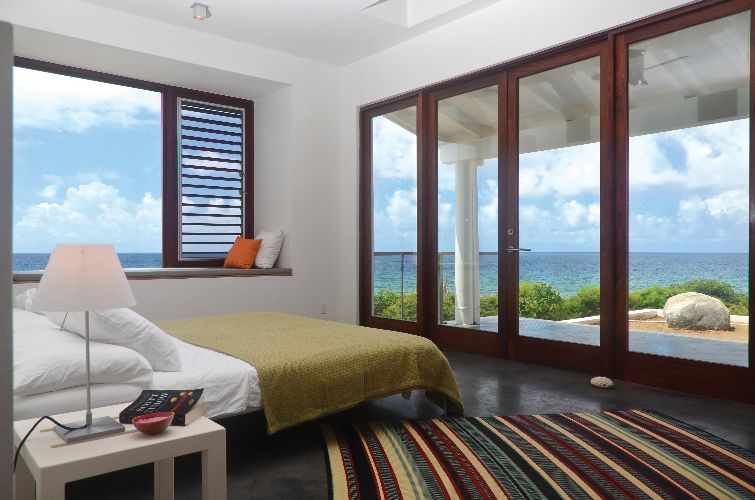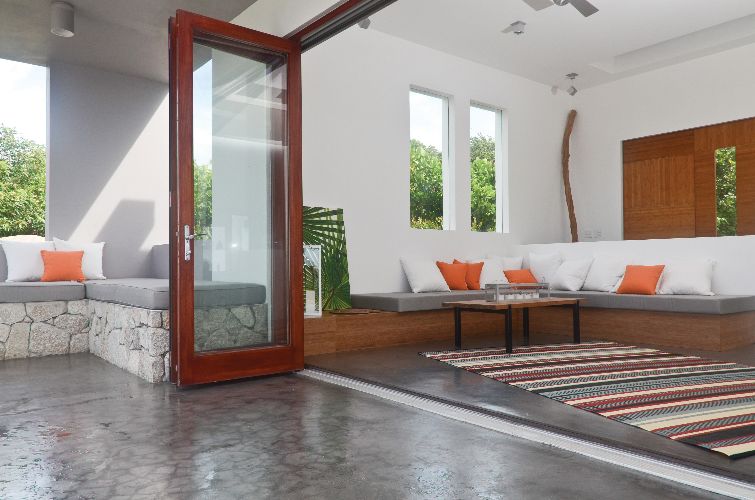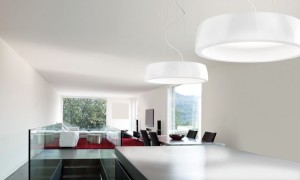Photography provided by OBMI
An Architect’s Perspective on the Hurricane Directive – BVI weather vs architecture
The quality of architectural construction in the BVI is generally good. Experienced contractors ensure buildings are built as vigorously as possible and structural engineers design for unfavourable scenarios.
Hurricane Earl of 2010—the BVI’s most recent serious storm—unleashed Category 4 winds, but damage to buildings was relatively light.
Contrary to popular belief, a hurricane in itself is not a natural disaster; rather, it’s an uncontrollable natural event, which if unleashed upon an unprepared community, can lead to unpleasant conclusions.
Thankfully, in our technologically advanced times, destruction due to these kinds of natural hazards is largely preventable. When discussing home building, properties can be protected from damage if careful thought and attention are designated to good design, quality materials and decent construction.
The component of a hurricane that provokes the most anxiety is its unpredictable wind forces, which present special problems for architectural strategy. Sustained hurricane-force winds can last for several hours, becoming turbulent and continually changing direction – every face of a building may be impacted.
Hurricane Earl in 2010 was a case in point, where the winds in the BVI started in the north east, and gradually swung around the north until the fiercest forces were being thrown at us from the south west some 6 hours later.
Under these conditions, no part of a building is spared. As long as the outer skin, or envelope of the building remains intact, the wind will flow over and around it. As hurricane-force winds intensify, positive pressure is created on the windward faces and as the wind flows around the building, it causes huge lift or suction—negative pressure—on the leeward faces.
The uplift forces from hurricane winds have been known to pull buildings completely out of the ground, so the design of the foundations can be as critical as the design of the walls and roofs.
Perhaps the most common area of failure is the roof cladding; metal sheeting, tiles or shingles can be ripped off due to poor quality or inadequate fixings. Loose debris from damaged buildings is picked up and thrown around, creating potentially damaging airborne missiles. This presents an additional threat to the integrity of the building envelope, the most vulnerable part being the window and door openings.
If a window breaks or a door is blown open, the envelope is breached, and wind enters the building, causing a sudden and dramatic increase in internal pressure, effectively doubling the force acting to lift the roof and push the walls outward.
The structural design of the building needs to allow for this possibility, with special care given to the connection details between the roof and the walls.
The majority of new building owners choose to use thickly laminated impact-resistant glass which—if used in properly designed and well installed windows and doors—will stay in place even if shattered.
Another alternative to a building owner’s options are heavy-duty fabric sheet systems, which are custom-made to cover openings and to fix around balconies and decks using stainless steel fasteners; these systems can be fairly easy to install and allow light through. When compared to being closed up in a dark house with solid opaque shutters, this is a clear ‘visible’ benefit.
We’re encouraged by expert advisories—Government and hurricane monitors—to ensure that all building openings are tightly shut. This increases the need to guarantee that things are totally secure, and that a sudden failure won’t occur.
The other component of a storm during this period—the torrential rain—will be lashing against the building from all directions, and will find its way in through even the tiniest of cracks, so it pays to keep things sealed up as much as possible to minimise water damage.
Unfortunately, however, there is still much room for improvement in the management of storm water; in recent years, far more damage has been done by rain than by wind, and we’ve seen some serious flooding, mudslides, sedimentation, wrecked roads and failed retaining walls.
It seems that we’re proficient in guaranteeing quality in our structures, but we need to understand that all of our construction and development has a combined effect on drainage patterns – the land around our buildings is as prone to damage and disruption as the buildings themselves.
Peruse our June and July 2013 issues for further guidance on hurricane season – Click here
[ts_fab]









